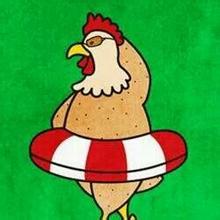<template>
<transition :name="fadeIn">
<div class="alertBox" v-show="show">
<div class="alert-mask" v-show="isShowMask"></div>
<transition :name="translate">
<div class="box" :class="position" v-show="show">
{{text}}
</div>
</transition>
</div>
</transition>
</template>
<script>
export default {
data() {
return {
}
},
props: {
show: { // 是否显示此toast
default: false
},
text: { // 提醒文字
default: 'loading'
},
position: { // 提醒容器位置
default: 'center'
},
isShowMask: { // 是否显示遮罩层
default: false
},
time: { // 显示时间
default: 1500
},
transition: { // 是否开启动画
default: true
}
},
mounted() { // 时间控制
setTimeout(() => {
this.show = false
}, this.time)
},
computed: {
translate() { // 根据props,生成相对应的动画
if (!this.transition) {
return ''
} else {
if (this.position === 'top') {
return 'translate-top'
} else if (this.position === 'middle') {
return 'translate-middle'
} else if (this.position === 'bottom') {
return 'translate-bottom'
}
}
},
fadeIn() { // 同上
if (!this.transition) {
return ''
} else {
return 'fadeIn'
}
}
}
}
</script>
<style>
.box{
position: fixed;
top: 50%;
left: 50%;
width: 100px;
height: 100px;
margin-left: -50px;
margin-top: -50px;
background: rgba(0,0,0,.5);
text-align: center;
line-height: 100px;
color: #fff;
font-size: 16px;
z-index: 5000;
color: #fff;
}
.box.top{
top: 50px;
margin-top: 0;
}
.box.center{
top: 50%;
margin-top: -100px;
}
.box.bottom{
top: auto;
bottom: 50px;
margin-top: 0;
}
.alert-mask{
position: fixed;
left: 0;
top: 0;
bottom: 0;
right: 0;
background: rgba(0,0,0,.5);
z-index: 4999;
}
.fadeIn-enter-active, .fadeIn-leave-active{
transition: opacity .3s;
}
.fadeIn-enter, .fadeIn-leave-active{
opacity: 0;
}
.translate-top-enter-active, .translate-top-leave-active{
transition: all 0.3s cubic-bezier(.36,.66,.04,1);
}
.translate-top-enter, .translate-top-leave-active{
transform: translateY(-50%);
opacity: 0;
}
.translate-middle-enter-active, .translate-middle-leave-active{
transition: all 0.3s cubic-bezier(.36,.66,.04,1);
}
.translate-middle-enter, .translate-middle-leave-active{
transform: translateY(80%);
opacity: 0;
}
.translate-bottom-enter-active, .translate-bottom-leave-active{
transition: all 0.3s cubic-bezier(.36,.66,.04,1);
}
.translate-bottom-enter, .translate-bottom-leave-active{
transform: translateY(100%);
opacity: 0;
}
</style>

